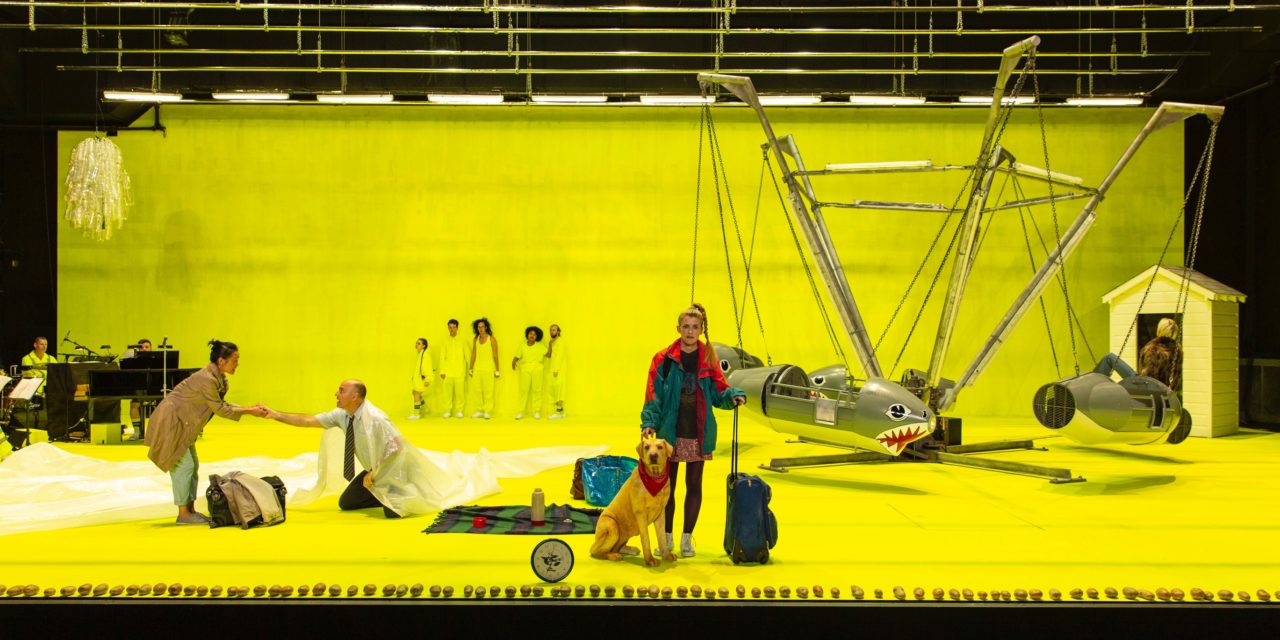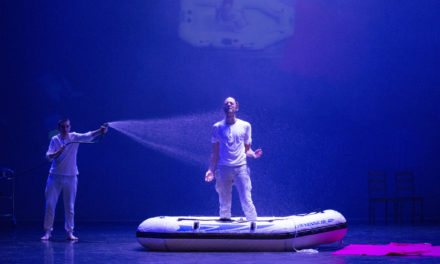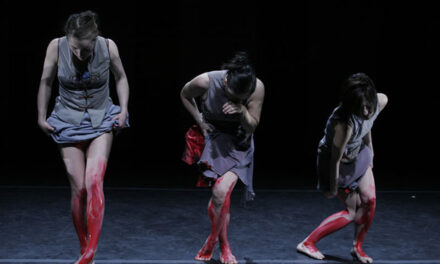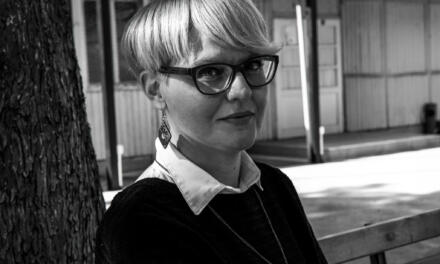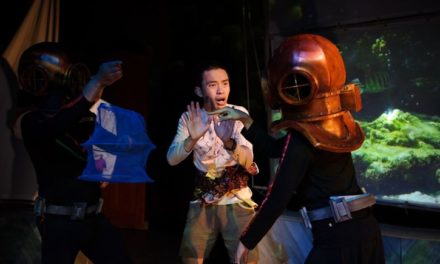Gideon Lester is Artistic Director for Theater and Dance at the Richard B. Fisher Center for the Performing Arts, and Director of the Theater and Performance Program at Bard College in Annandale-on-Hudson, New York. In the interview below, he discusses his insights as a dramaturg, performance curator, educator, and artistic leader, and introduces Bard SummerScape, one of the most highly-anticipated performing arts festivals in the US, highlighting special theatre and dance events in SummerScape 2018, running from June 28 to August 19, 2018.
Yan Chen (YC): What’s the basic structure and makeup of Bard SummerScape?
Gideon Lester (GL): We have several different platforms at the Fisher Center for Performing Arts at Bard. The summer festival, Bard SummerScape, started when the building, an architectural wonder designed by Frank Gehry, opened fifteen years ago, and the work has always been artistically very ambitious.
At SummerScape, there’s theatre, dance, classical music, opera, and a cabaret tent. We have one major theatre production and one major dance performance. The challenge is, if we’re only going to make one or two things every summer, how can we create something really special? We try and create projects that you have to come to the Hudson Valley to see because you’re not going to be able to see them anywhere else, and we have to think very hard about who the audience should be for a particular event, and how we attract them. It also has to be meaningful in the career of the artist that we’re working with. It’s extraordinarily hard to be an artist in America these days—there is so little funding available. The most important services that we can offer American artists are investments of time and resources and bringing them to a new level of national and international visibility.
In general, SummerScape is curated around the life and work of a composer. It started as a classical music festival. Every year, the President of Bard, musicologist, and conductor Leon Botstein, picks a composer. Much of the time, my part of the program relates to the composer that he’s picked, but this summer, we have two commissions that are completely independent from the composer of the festival, Nikolai Rimsky-Korsakov.
One of them is a Leonard Bernstein musical based on Peter Pan, which has only very rarely been produced since 1950. Part of what makes SummerScape distinctive is that there’s always been a focus on rediscovering something that has been unjustly neglected, and bringing it to new life and prominence. We’re doing it because 2018 is the Bernstein centenary year, and it’s the only major production of a Bernstein theatrical work in the New York area in 2018.
We’re working with an opera director, Christopher Alden, who has directed Bernstein before to great success. This will be his first theatre project. We have a very interesting cast of contemporary New York performers, several of whom are gender non-binary. Wendy is going to be played by Erin Markey, a gender non-binary cabaret star. The production is going to have what we used to call a very Downtown New York aesthetic, and it will be a very surprising way to encounter Peter Pan.
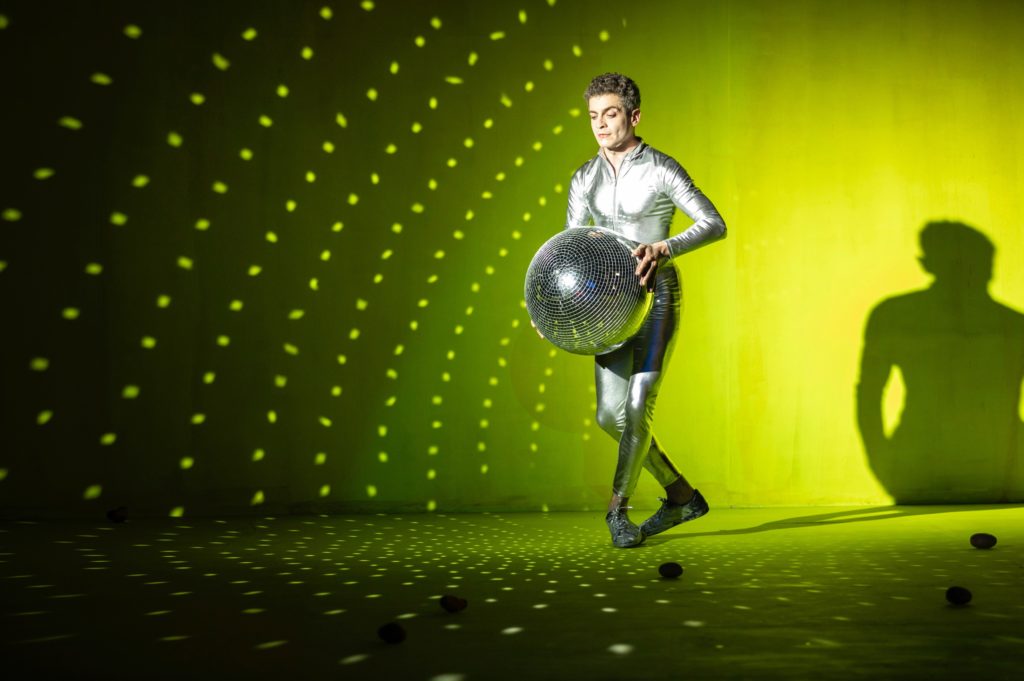
Jack Ferver as Tinker Bell in Leonard Bernstein’s Peter Pan at Bard SummerScape 2018. Photo: Maria Baranova.
The other project is Four Quartets, a significant dance commission with one of my favorite contemporary American choreographers, Pam Tanowitz. We presented some existing work of hers at SummerScape three years ago. We discovered then that we both love the poetry of T.S. Eliot, and that 2018 will be the 75th year since the publication of Eliot’s great masterpiece, Four Quartets, a series of four very beautiful, abstract, difficult long poems, in which Eliot is trying to articulate the fundamental nature of human experience in time and outside time.
YC: Could you tell us why Four Quartets is a unique project?
GL: Four Quartets has had an extremely long development process, and I think it’s going to be very special. We’ve been working for three years, trying to find the right way to create a major dance commission that is a setting of Eliot’s poetry. It has attracted some other very significant artists: The set is based on images by the painter Brice Marden, a major American Minimalist artist. The music is by Kaija Saariaho, a Finnish composer who just had an opera, L’Amour de Loin, produced at the Metropolitan Opera last year. She was the second woman ever to have an opera produced at the Met, which is a scandal. Kathleen Chalfant, a superb American stage actress, will be reading the poems. It’s a combination of literature, dance, music, and visual art.
Apart from my crazy passion for these texts, the curatorial reason for this project is that it’s a way of bringing Pam’s choreography to a much wider attention than she’s been able to have in the past. The American dance scene is very impoverished at the moment—not in terms of talent—there are many great and interesting choreographers, but there’s so little funding available for developing large-scale American dance. If we’re not careful, we’ll be in a situation in five or six years where there’s just no representation of American dance on large stages at all, in this country or internationally, beyond ballet. Four Quartets is, in part, a way of showing a wider community how spectacular Pam’s work is, by pairing her with internationally prominent artists and a text which is really significant within the world of poetry lovers.
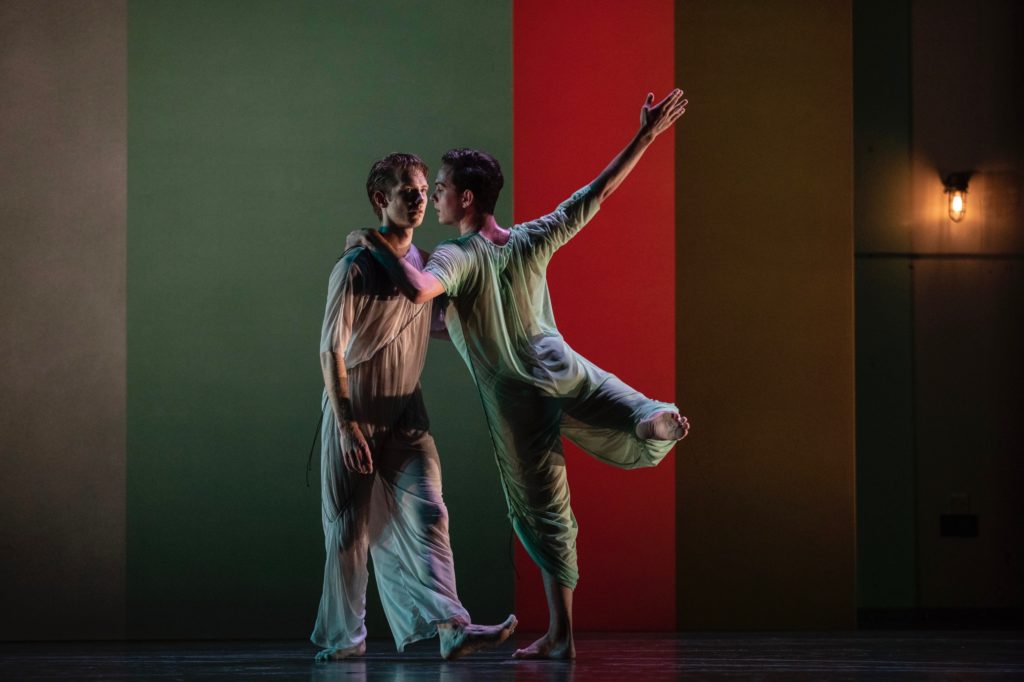
Four Quartets, choreographed by Pam Tanowitz, at Bard SummerScape 2018. Photo: Maria Baranova.
YC: Are the artists of Four Quartets all accustomed to collaborating so closely with other artists from different disciplines?
GL: To various extents. Kaija has set poetry to music before, and she’s written operas; Brice has done one set design before; Pam has worked with musicians and visual artists. But none of us has ever collaborated in quite this way.
It’s taken years to figure out exactly what the work should be. Pam has been leading that, but she and I have partnered very closely. We’ve taken a metaphorical journey together, and also a literal journey. T.S. Eliot, in this sequence of poems, is writing about four very specific places, and she and I have been to all four of those places together on our research trip. We’ve spent a lot of time with Kaija working on the relationship between the text and the music, and Pam, in doing that, was gathering choreographic ideas as well. We’ve also worked very closely with Brice on what the exact sequence of images taken from his paintings should be, and how the volumes of the set design should be integrated with his interests as a painter, and with his own thoughts about space, color, composition, structure.
If Four Quartets works, it would be very tempting to say, “now we have a formula, ‘work of literature with a choreographer with a composer with a visual artist.’ How can we substitute other artists and try to repeat the success?” But I think it’s very important not to repeat ourselves, and we’re also aware that there will never be another project like this. Actually, the project has come very organically out of Eliot’s poetry, and we have to be able to clean the slate and start again with a new project.
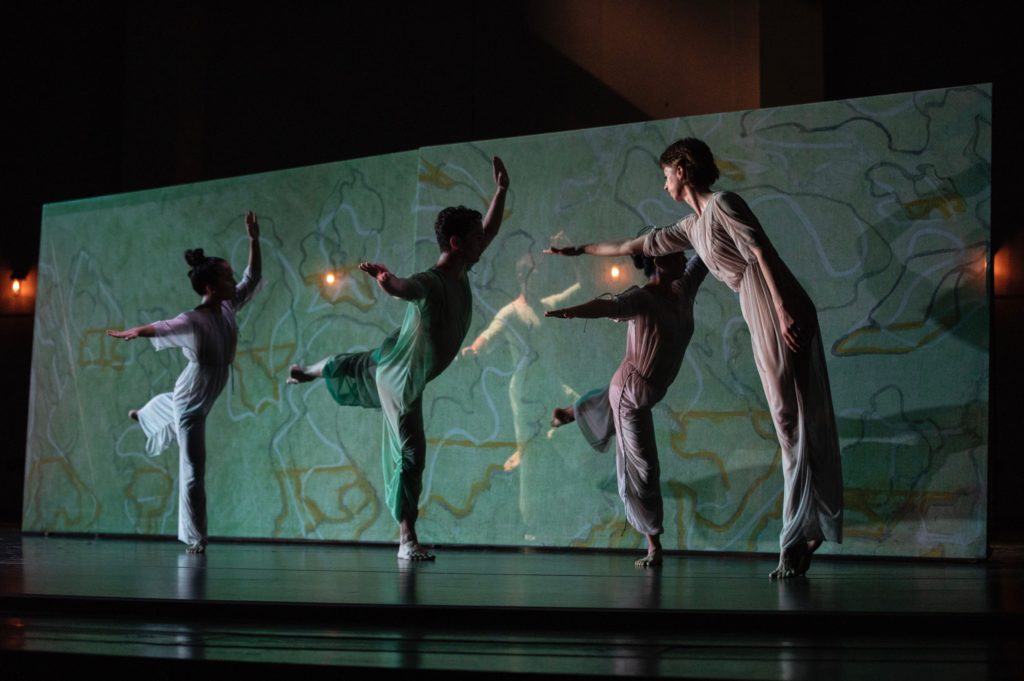
Four Quartets, choreographed by Pam Tanowitz, at Bard Summerscape 2018. Photo: Maria Baranova.
YC: As the artistic leader and curator who commissioned the work, you’re also the dramaturg of Four Quartets. What has the dramaturgical process been like?
GL: Some of my previous experience has shaped the way that I think about structure, time, and space, but I’ve never worked in such a direct and intimate way with a choreographer before. I can’t speak for Pam, but for me, it’s been very exciting, and I think my theatre training has also been helpful to her because I approach her work from a very different perspective than a dance dramaturg might.
Because I’m also the artistic director of the institution, I’m also always thinking about fundraising. The question that my team and I ask ourselves now is not just, “What are we doing?” or “What are we making?” It’s also how we’re doing it and making it. The dramaturgy, for me, has been expanded to thinking about the dramaturgy of the life of the institution, which includes working with donors, figuring out new strategies for raising resources, partnering with other institutions…and it’s all connected.
I have to commission projects that the institution can support while trying not to compromise the artistic integrity of the place. The answer can’t just be to make the work commercial, but in the American system, one cannot separate the creative process from the realities of raising resources. I don’t think this is such a bad thing—if I’m going to be spending money, then I also need to take responsibility for raising the money. Now, I think about the work that I do as dramaturgical in a much larger sense than it was when I first started when I didn’t have responsibilities for the health of the institution and the excitement of the board.
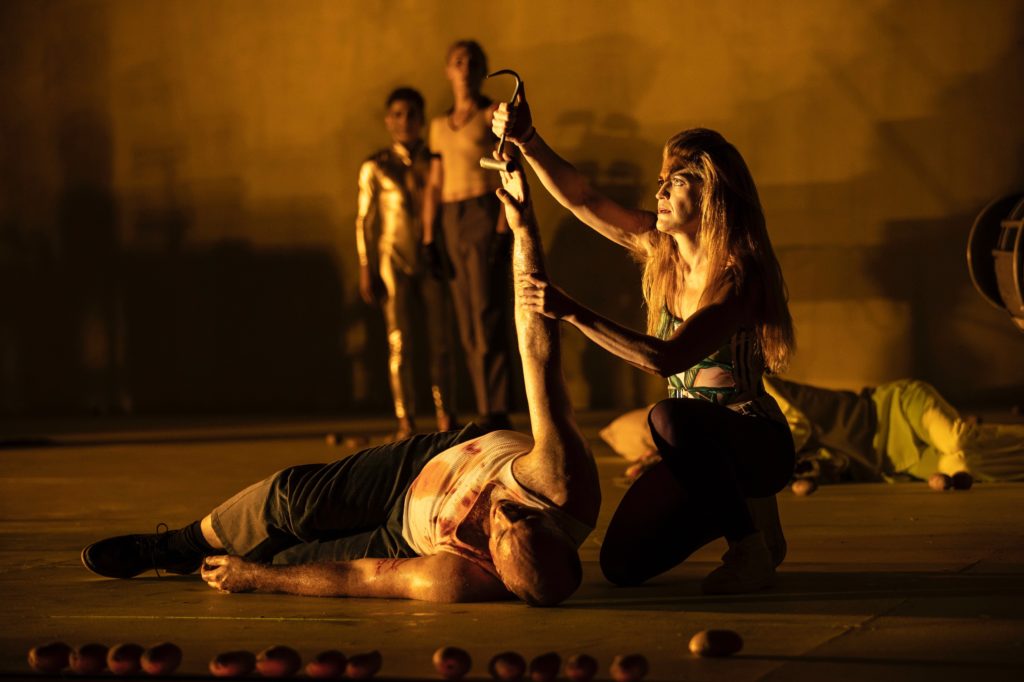
William Michals as Captain Hook and Erin Markey as Wendy in Leonard Bernstein’s Peter Pan, directed by Christopher Alden, at Bard SummerScape 2018. Photo: Maria Baranova.
YC: What essential qualities do you think dramaturgs should acquire in our day and age?
GL: T.S. Eliot says in Four Quartets, “The only wisdom we can hope to acquire is the wisdom of humility.” The hardest thing about being a dramaturg is knowing when you’re right, and being open to the fact that you may not be right. You have to develop enough knowledge to be able to back up your instincts and have enough flexibility to be able to let go of your assumptions about what’s good and what’s not good. It took a long time to acquire sufficient experience to know when I can be helpful and when I can’t, and to overcome the fear that I had no idea what I was supposed to be doing, the fear of not knowing what my job is, and the fear that I may be superfluous to the creative process. As a dramaturg, you have to know a lot, and you have to be very sensitive in order to be a good communicator, but there really isn’t a way of short-circuiting that experience. One of my graduate school professors said that the dramaturg’s job is to help the work become as good as possible, but my understanding of what that takes is very different now than it was when I was a year out of grad school.
It’s also important to acquire the confidence to know that each artistic relationship requires different skills and a different approach and that no two relationships and no two processes will be the same. Sometimes I can help by doing new play development, or production dramaturgy with a director. Sometimes the way that I can help is by just welcoming artists to the institution, or by raising money to let them do something. There are also a lot of artists that I don’t have a way of helping, which doesn’t mean that there are artists we shouldn’t be working with. It just means that I don’t have what they need.
Another thing which has been important for me is the sense that this is a shared adventure while knowing that making art in America is not easy. The application of focus and concentration, and being able to keep working on something until it starts to become good, are very precious resources. In any artistic or rehearsal process, we’re together creating the circumstances in which something really wonderful can happen. Some of that is very practical, and some of it is very mysterious, but I feel incredibly lucky that my work is to help create the best circumstances in which artists can create. That’s really the bottom line, and it takes a huge effort of will on the part of everybody involved to create those circumstances because they’re not given to us. It’s different in every situation, and often, we really have to fight for them.
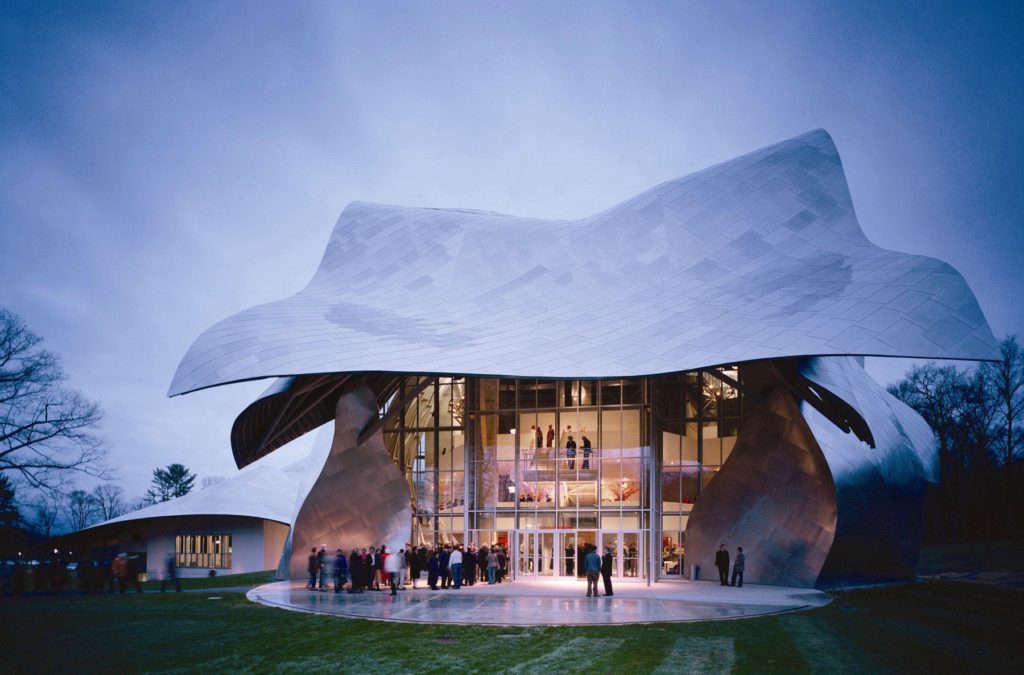
The Richard B. Fisher Center for the Performing Arts at Bard College, designed by Frank Gehry. Photo: Peter Aaron/Esto.
YC: What are some of the other artistic programs at Bard College, apart from SummerScape?
GL: We have a development and residency commissioning program, Live Arts Bard, where we bring artists in during the year to develop work. The program means that our students are working with a wide array of artists. We’ve also created a biennial festival where we’re working in a much more interdisciplinary, contemporary, and experimental vein than we can with SummerScape. 2019 is the third edition of the festival and will focus on the subject of borders. It will take place at Bard’s campuses in the Hudson Valley, in Berlin, and in East Jerusalem, and I’m organizing it with the Lebanese live artist Tania El Khoury.
YC: Could you talk about the relationship between the university environment at Bard and the professional theatre world? What is it like for students to study and work in the arts at Bard?
GL: I think of universities as experiments in community. Martin Duberman wrote a very good book about Black Mountain College, the experimental arts college that existed for about thirty years in the middle of the twentieth century, and the subtitle of that book was, “an exploration in community.” I think that universities can offer, particularly in arts schools, a place where we can model relationships, and ways of making and engaging with work that can be radical. Particularly, in an environment where we have responsibility for undergraduate education, we have students who are at a really formative stage of their development. We have to take responsibility for the ideas that they’re going to get exposed to. We try to create a balance between inspiring and opening up the students to their own capabilities and capacities and also helping them to learn from other artists and the great traditions of the past.
For those of us who are teaching, or in some way engaged with artistic development, I like to think that our job is not to prepare students for the status quo and for them to enter the American theatre as it is now, but to train them to be idealistic about what kind of work they would like to be doing in the next ten or twenty years. What are we modeling that our students will learn from, but also challenge, overturn, and react to in their own work? Who are the artists, thinkers, and scholars—the best people that we can bring them into contact with—who will inspire them as they start their own journeys? That’s the great gift of working at the intersection of education and professional art making.
There’s also always a very grounding reality check when working with students. We may think we have great ideas, and then the students will come and say, “Your ideas are bullshit,” “You’re not being contemporary,” or, “You’re not thinking about the issues that really matter to our generation.” It’s fantastic, and sometimes very difficult and disheartening, to be in that kind of environment. You may think that you’re incredibly emancipated, freethinking, and radical in your ideas, but your ideas come from twenty years ago. Just as we start to get complacent about how great everything is, and how enlightened we are, a nineteen-year-old undergraduate will say, you don’t get it at all. And I do think that we have a lot to learn, particularly at the moment, from undergraduates, who are experiencing life in this country at a very turbulent, difficult, confusing time that we don’t necessarily understand any better than they do.
Four Quartets ran at Bard SummerScape from July 6th to 8th, 2018.
Leonard Bernstein’s Peter Pan runs at Bard SummerScape from June 28 to July 22, 2018.
Gideon Lester is Director of the Theater and Performance Program at Bard College and Artistic Director for Theater and Dance at the Richard B. Fisher Center for the Performing Arts. He is also the co-curator of Crossing the Line, a cross-disciplinary arts festival in New York City. From 1997 to 2009, he worked at the American Repertory Theatre in Cambridge, Massachusetts, as Acting Artistic Director, Associate Artistic Director, and Resident Dramaturg. He also chaired Harvard University’s MFA program in Dramaturgy at the A.R.T./MXAT Institute for Advanced Theatre Training and taught at Harvard College. From 2009 to 2011 he taught at Columbia University’s School of the Arts where he founded and directed the Arts Collaboration Lab, in association with Performance Space 122.
This post was written by the author in their personal capacity.The opinions expressed in this article are the author’s own and do not reflect the view of The Theatre Times, their staff or collaborators.
This post was written by Yan Chen.
The views expressed here belong to the author and do not necessarily reflect our views and opinions.

